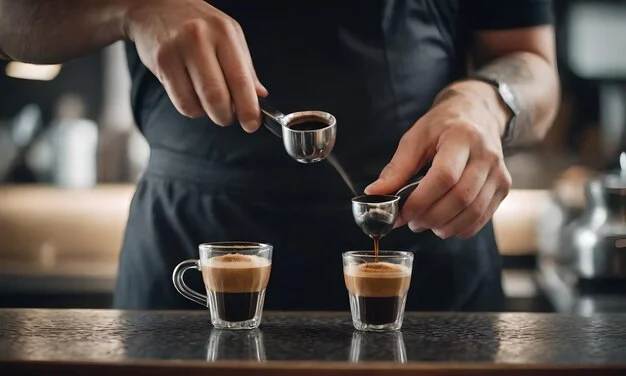There’s something about pulling the perfect shot of espresso at home that feels deeply satisfying—until you realize it could be even better. Maybe the crema isn’t quite as thick as you’d like, or the flavor isn’t as balanced as that café down the street. Maybe you’ve gone deep into the rabbit hole of espresso culture, and now you’re obsessing over temperature stability and extraction time. Wherever you are in your home espresso journey, there’s always another level. The key isn’t just upgrading your machine (though that can help); it’s about mastering the small details that turn an average shot into an unforgettable one.
Your Espresso Machine Can Only Do So Much—The Rest is Up to You
A top-tier espresso setup won’t magically produce barista-level shots. It’s easy to assume that an expensive machine will do all the work, but the reality is, technique matters just as much as equipment. If you’ve been blaming your machine for inconsistent results, it might be time to look elsewhere.
Start with your grind. If you’re using pre-ground coffee, you’re already missing out. Freshly ground beans are non-negotiable, and a high-quality burr grinder will make or break your shot. But even with a great grinder, dialing in the perfect consistency takes trial and error. Too fine, and you risk over-extraction; too coarse, and your espresso will taste weak and sour. The goal is to find that sweet spot where resistance meets balance—where water flows evenly through the puck, pulling out every nuance of flavor without bitterness or astringency.
Then there’s tamping. A weak, uneven tamp can lead to channeling, where water finds the path of least resistance instead of extracting the coffee evenly. Too much pressure, and you’ll restrict flow. It’s all about consistency. The pressure doesn’t have to be extreme, just firm and uniform. If you’re still struggling, a calibrated tamper can take out the guesswork.
Water Quality: The Overlooked Ingredient That Can Ruin Everything
There’s an obsession with coffee beans and grind size, but water? Not nearly enough people pay attention to it, even though it makes up over 90% of the final cup. Tap water can be loaded with minerals that create scale buildup in your machine or, worse, unwanted flavors in your espresso. On the other hand, ultra-purified water can strip the coffee of its complexity, leaving it tasting flat.
The goal is balance. Filtered water with the right mineral content enhances extraction, letting you experience different espresso and coffee flavors the way they were meant to be enjoyed. Some espresso enthusiasts go as far as using mineral packets to create the perfect water profile for their beans. If you’re not ready for that level of commitment, a simple water filter can make a noticeable difference.
The One Investment That Actually Transforms Your Espresso
You can have the best beans, the perfect grind, and an espresso machine that costs more than your rent, but if you’re still using the accessories that came in the box, you’re leaving serious quality on the table. Home espresso isn’t just about the machine—it’s about controlling every detail of the process. And that means upgrading your tools.
A precision basket can improve extraction by ensuring an even puck. A high-end distribution tool helps spread the grounds uniformly, preventing channeling. A naked portafilter gives you instant feedback on your technique, showing you exactly where your tamping or grind size might be off. Even a quality milk pitcher can make a difference if you’re into lattes or cappuccinos. In other words, make sure you’re investing in premium espresso accessories to get the most out of your machine. These are the upgrades that take your coffee from good to unforgettable, giving you the kind of consistency and flavor you thought only professionals could achieve.
Heat, Preinfusion, and the Variables You Haven’t Thought About
There’s a reason cafés spend so much money on temperature-stable machines. Heat plays a massive role in extraction, and if your machine fluctuates too much, you’ll taste it in your espresso. Some home machines allow you to control temperature settings, but even if yours doesn’t, preheating your machine, portafilter, and even your cup can help maintain stability.
Preinfusion is another overlooked detail. It allows water to gently saturate the coffee puck before full-pressure extraction begins, reducing channeling and producing a more balanced shot. Some machines have built-in preinfusion settings, but if yours doesn’t, you can simulate it manually by running a few seconds of low-pressure water through the puck before the full extraction kicks in.
Milk Frothing: The Difference Between Café-Worthy Lattes and a Mess
If you’ve ever wondered why your homemade lattes don’t taste as smooth as the ones from your favorite café, it’s probably the milk. Most people either steam their milk too hot, creating a burnt flavor, or don’t incorporate enough air for that silky microfoam texture.
The trick is controlling the aeration phase (when you introduce air) and the texturing phase (when you integrate that air into the milk). The goal isn’t a giant pile of froth but a smooth, velvety texture that blends seamlessly with espresso. Start with cold milk, keep the steam wand just below the surface, and listen for a soft hissing sound—anything too loud means you’re introducing too much air too quickly. Once you’ve got a whirlpool effect going, you’re on the right track.
Espresso Is a Craft—Approach It Like One
Great espresso isn’t something you stumble into—it’s something you refine, shot after shot. It’s the difference between just making coffee and actually understanding it. When you start seeing it as a process rather than just a drink, everything changes. Every small tweak—whether it’s adjusting the grind, improving your tamp, or upgrading your accessories—brings you closer to that perfect shot. And once you experience what truly exceptional home espresso tastes like, there’s no going back.







